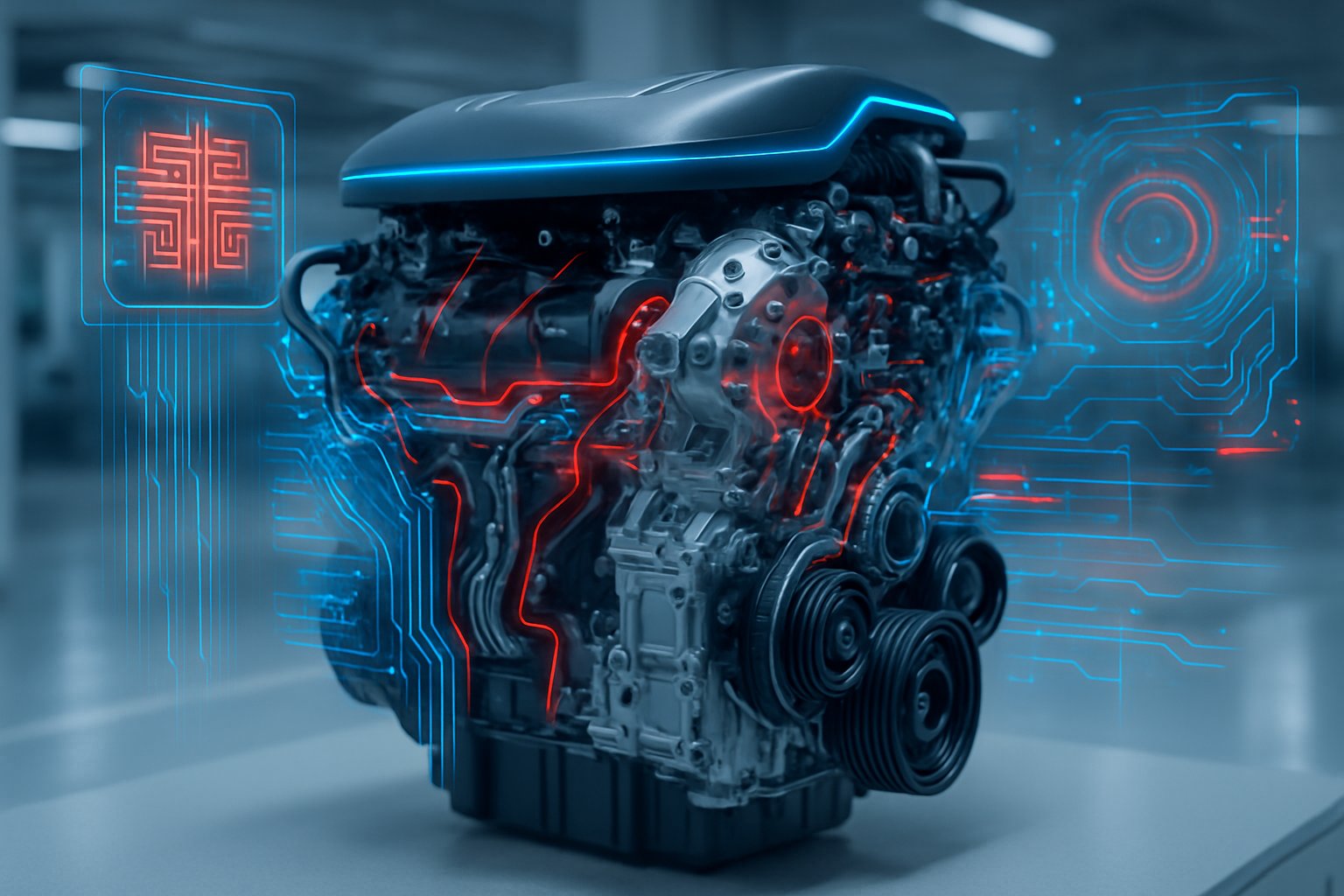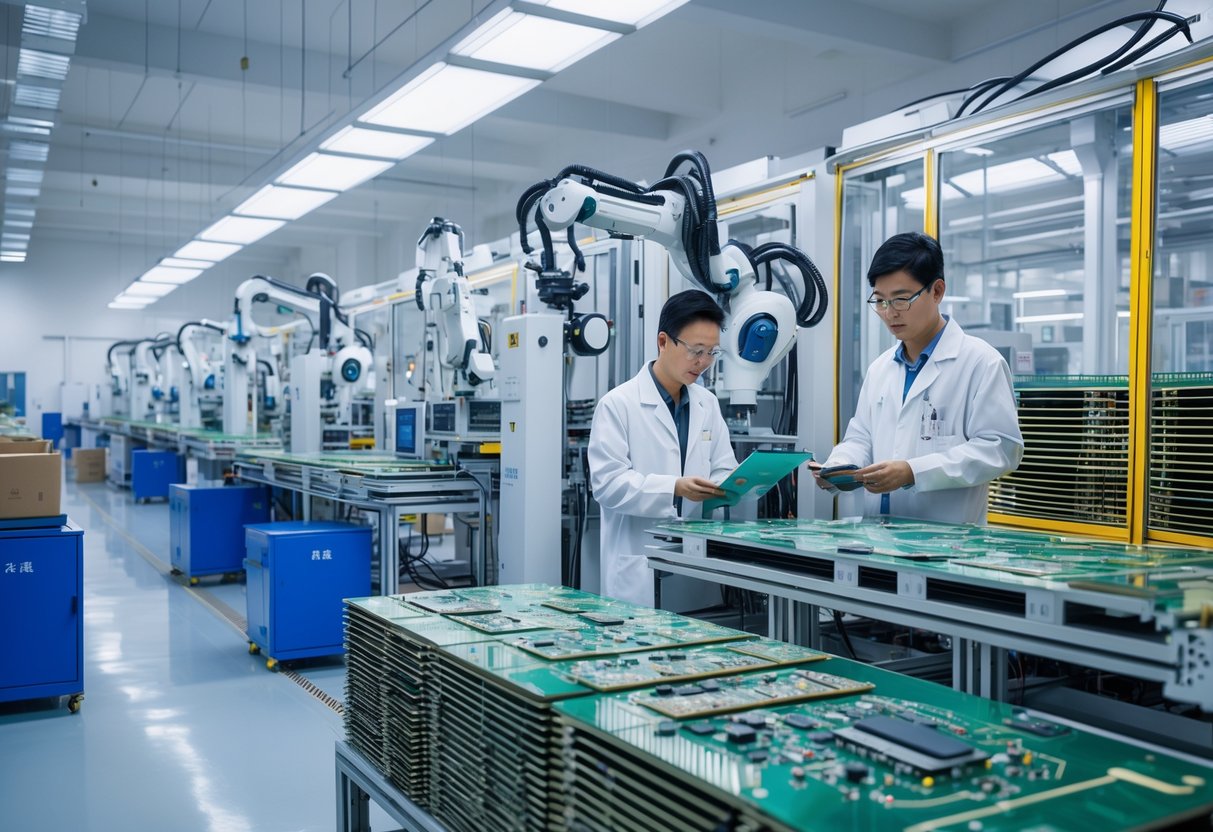If you want to understand how China is shaping the future of technology and business, you really have to look at China innovation.
China is swiftly rising as a global innovation leader, especially in 5G, quantum computing, and AI. Once mainly known for factory output, China now leads in high-tech fields. It’s not just improving old tech—it’s creating breakthroughs in electric vehicles, solar power, and digital systems.
This shift? It’s not just about catching up. China’s setting new standards worldwide.
Your curiosity might spark when you learn that China’s innovation ecosystem thrives on strong government support, a massive national market, and a blend of entrepreneurship and collaboration. These ingredients have helped China build 26 top science and technology clusters and a rising number of smart cities.
It’s honestly one of the most cutting-edge places for digital and industrial breakthroughs right now.
China Innovation at a Glance
China’s innovation landscape is changing fast, with a focus on technology, talent, and industrial upgrades. You can see clear differences from other innovation leaders, especially now that China’s moved from copying foreign tech to building its own.
What Sets China Innovation Apart Today?
China pours huge resources into research and development. Over 5 million STEM graduates each year fuel this engine.
This vast talent pool drives breakthroughs in electric vehicles, 5G, and green energy. It’s impressive, honestly.
Chinese firms really shine at incremental innovations. They improve existing tech to cut costs and boost quality. That’s how they stay competitive, especially in manufacturing and commercial nuclear energy.
Government policies link domestic research with global markets. This boosts China’s ability to share innovation worldwide.
From Copycat to Global Tech Leader
Not so long ago, China mostly copied foreign tech. Now, its companies lead in high-tech industries like AI, advanced manufacturing, and plug-in hybrids that can travel over 2,000 kilometers on one charge.
China’s climbed into the top 10 globally for innovation rankings. Within a decade, it might even match or overtake Western leaders in key areas.
Massive investments and a shift toward original research have helped China move from follower to a real force shaping global innovation.
China’s supply chain moves fast and affects the world. Read How the China Supply Chain Is Shaping Global Trade.
Leading Tech Sectors
China’s innovation targets fast-growing tech fields. You’ll notice breakthroughs where computing power, new materials, and clean energy overlap.
These are the areas that shape how we’ll live and work in the future.
AI, Semiconductors & Quantum Breakthroughs GreatWall
China leads in artificial intelligence (AI) research and applications, like facial recognition and language processing. The government keeps investing in advanced semiconductor factories to cut reliance on foreign chips.
Quantum computing and communication are moving fast too. China built one of the world’s first quantum satellites for secure communication.
Key points:
- AI advances in speech and image recognition
- Government-backed semiconductor production
- Quantum satellites for secure data
Expect China to keep climbing in the global ICT ecosystem with these moves.
AI in China now has legal guardrails that matter. Read China's Artificial Intelligence Law: Everything You Need to Know.
EVs, Robotics & Drones Pushing Edge
China’s electric vehicle (EV) industry is exploding, with big companies scaling up production and battery tech. The country leads in EV sales and is working hard on charging infrastructure.
Robotics and drones are booming as well. Chinese firms build robots for factories and service sectors, plus drones for delivery and agriculture.
Key developments include:
- High EV market share and battery innovation
- Industrial robots in manufacturing lines
- Wide use of drones for commercial tasks
These sectors show how China’s tech focus is changing transport, work, and supply chains.
Biotech, Clean-Energy & Space
China’s making progress in biotechnology, including gene editing and pharmaceuticals. These efforts aim to improve healthcare and boost agricultural yields.
Clean energy’s another big play. China develops solar panels, wind turbines, and battery storage at massive scale, ranking among the top manufacturers for renewables.
Space tech is rising too. China’s space program launches satellites, probes, and crewed missions—including an in-progress space station.
Highlights:
- Gene editing research and drug development
- Leadership in solar and wind manufacturing
- Crewed space missions and satellite networks
Watch these fields—they’re growing fast as China puts more into health, energy, and space tech.
Innovation Engine

China’s innovation engine runs on focused strategies in technology, research, and skilled talent. The country wants to move past just manufacturing and become a leader in global tech development.
Made in China 2025 & National R&D Push
Made in China 2025 is a cornerstone policy for innovation. Launched in 2015, it targets upgrades in robotics, aerospace, and new-energy vehicles, aiming to cut dependence on foreign tech.
China spends heavily on research and development (R&D). In 2024, R&D investment topped 3% of GDP, rivaling the US and Europe.
State-backed funding flows into AI, semiconductors, and biotech. The government offers tax breaks and grants to encourage local innovation.
They’re working on a unified national market to improve supply chains and innovation flow. These moves make China a tempting spot for global investors in tech and manufacturing upgrades.
Universities, Clusters & STEM Pipeline
Universities and research clusters play a huge role in China’s innovation story. China’s higher education system has grown quickly, with top universities now churning out millions of science, tech, engineering, and math grads.
Innovation parks and tech clusters have popped up in cities like Shenzhen and Hangzhou. Startups, big tech, and research institutes work side by side, which really speeds up product development.
China also nurtures talent from a young age with STEM education reforms. This steady pipeline feeds skilled workers into industries and R&D centers, keeping innovation humming along.
Global Reach & Rivalry

China’s innovation is shaking up global markets and challenging tech leaders like the US and EU. If you’re thinking about tech leadership, you can’t ignore China’s rapid rise in innovation output and its strategic exports—especially in EVs, AI, and semiconductors.
China vs US/EU: Output & Rankings
China’s a powerhouse in global innovation rankings now. It leads in patent filings, especially in 5G, AI, and green energy.
In 2024, China overtook both the US and EU in total patent applications. That’s a big deal.
The US still has the edge in breakthrough research and high-value tech firms. It leads in AI startup investments and advanced chip design.
Companies like Alibaba strengthen China’s tech ecosystem, especially in cloud computing and e-commerce. The EU, meanwhile, lags in scale but stays strong in regulatory frameworks and industrial innovation.
Many European firms rely on China’s innovation ecosystem for R&D, but they risk losing their tech edge over time.
Exporting Tech: EVs, AI & Chips
China’s exporting more cutting-edge tech every year. Electric vehicles are a great example—companies like BYD and NIO are expanding fast in markets outside China.
Chinese EVs are picking up market share in Europe and Southeast Asia because of their competitive pricing and growing charging networks.
In AI, firms like Alibaba are pushing cloud services and AI applications that drive industries at scale. That’s strengthening China’s global digital infrastructure position.
On semiconductors, China’s still working to close the gap and reduce reliance on foreign chips. Export controls from the US remain a hurdle, but domestic chip production is growing thanks to major government investment in self-reliance.
Keep an eye on these exports—they’re reshaping global tech competition and signaling China’s ambition to be a top tech exporter.
Tech in China comes with evolving rules and red tape. Read Compliance in China's Tech Industry: A Guide for Foreign Investors.
Hurdles & Risks
China’s innovation journey isn’t all smooth sailing. The country faces problems like too much industrial capacity, weak companies draining resources, and intellectual property (IP) risks.
Global sanctions and tension between government control and private firms add to the mix.
Overcapacity, "Zombie" Fabs & IP Challenges
China’s semiconductor and manufacturing sectors struggle with overcapacity. Many factories sit underused or churn out more than needed, leading to wasted resources and slower progress.
Some facilities—so-called "zombie" fabs—keep operating even while losing money, propped up by government support. These drag down the whole supply chain.
Intellectual property issues are another headache. China’s fast innovation growth brings concerns about copying and IP theft, which erode trust between foreign and domestic companies.
Protecting IP rights remains a big challenge as China’s innovation environment expands.
Sanctions Push & State vs Private Tension
International sanctions, especially from the US, limit China’s access to critical tech like advanced chips and software. These restrictions slow China’s tech progress, but also push it to find new paths and aim for self-reliance.
Inside China, there’s friction between state-run enterprises and the private sector. The government controls strategic industries, but private companies often lead in innovation.
This tension over policies, funding, and market access can get messy. Balancing state priorities with private creativity is crucial for success in the Chinese tech landscape.
What's Next?
China’s pouring resources into new technologies that’ll shape the near future. Big advances in AI—beyond just software—and a strong push for green tech are on the horizon.
These trends will ripple through industries, markets, and daily life all over the world. Where will it all lead? Guess we’ll have to wait and see.
2025–2030 Trends: Embodied AI, Green Tech
From 2025 to 2030, look for China to take the lead in embodied AI. We're talking about smart machines—robotaxis, service robots—that actually do things out in the world, not just online or behind the scenes.
China’s huge market gives these technologies a chance to get tested and tweaked with real people. That kind of scale is tough to match elsewhere.
They're also going big on green tech. Clean energy, electric vehicles, and more sustainable manufacturing are all getting serious investment.
This push aims to cut pollution and carbon emissions, but it’s also about keeping the economy growing. Expect to see more affordable, energy-saving products rolling out of China soon.
Why China Innovation Matters to You & the World
China’s innovation really does touch your life, whether you notice or not. Tech advances there keep driving down the cost of things like electronics and cars.
With better AI and manufacturing, new gadgets will get smarter and, honestly, probably cheaper. That’s a win for most of us.
On a bigger scale, China’s push for green tech helps the whole world battle climate change. Their clean energy investments ripple out, nudging global emissions down bit by bit.
As Chinese tech companies get stronger, they start shaping global markets and even the standards everyone else follows. That means what you buy—and how industries change—gets influenced by what’s happening over there.
Final Thoughts
China innovation is surging ahead—from advanced AI and quantum research to 5G, EVs, and solar power. In 2023, China spent ¥3.3 trillion (up 8.1%) on R&D, reaching about 96% of U.S. R&D spending when adjusted for purchasing power. BYD overtook Tesla in 2024, producing about 1.78 million EVs and capturing over 17% of global EV battery market share.
Government funding, thriving tech hubs, and policy support have fueled this rise—though IP issues and trade restrictions persist.
For anyone tracking global tech trends, China's next moves matter. Contact China Legal Experts to explore the legal side of China’s innovation surge.
Fast-growing innovation hubs are opening new paths for investors. Read Business Opportunities in China: Where To Invest Next.
Frequently Asked Questions
What recent technological advancements have solidified China's position in the global innovation landscape?
China’s leading the charge in electric vehicles. Companies like BYD have cars that can go over 2,000 kilometers without charging. Pretty wild, right?
They’ve also built their own operating system, HarmonyOS, so they’re not stuck relying on foreign software. That’s a big deal for tech independence.
China’s pouring resources into AI, robotics, and 5G. All of this is pushing them closer to the top of the global tech game.
How does China's innovation ecosystem compare to that of the United States?
China’s system leans heavily on government funding and planning. There’s strong public support for science and tech research, especially in the industries they care about most.
Meanwhile, the U.S. tends to let private companies and venture capital lead the way. Still, China’s catching up fast by building massive research centers and giving start-ups a boost.
How do Chinese companies contribute to the nation's innovation ranking worldwide?
Chinese companies really drive innovation. They’re quick to develop and scale new products—just look at Huawei and BYD for telecom and electric vehicles.
These firms take advantage of China’s huge domestic market and policies that encourage R&D. Their global growth keeps pushing China higher in the innovation rankings.
What is Made in China 2025 innovation?
Made in China 2025 is a government plan that focuses on upgrading manufacturing with new technology. The plan targets industries like robotics, aerospace, and renewable energy.
China wants to lead in high-tech production. The plan pushes for more research and talent development.
It also encourages stronger supply chains. The goal? Rely less on foreign tech and boost homegrown innovation.
Subscribe to receive updates
Subscribe to receive the latest blog posts to your inbox every week.






